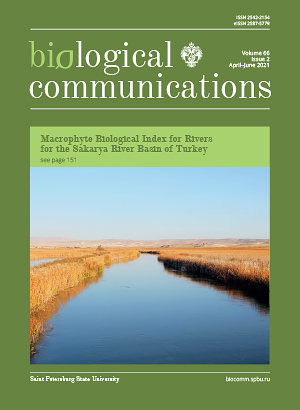Supply of acetyl-CoA to N2-fixing bacteroids: insights from the mutational and proteomic analyses of Sinorhizobium meliloti
DOI:
https://doi.org/10.21638/spbu03.2021.203Abstract
Rhizobia represent a diverse group of gram-negative bacteria capable of fixing atmospheric nitrogen in symbiosis with leguminous plants. Mechanisms of symbiotic efficiency are important to study not only to reveal the “fine tuning” of the host–symbiont supra-organismal genetic system emergence, but also to develop agriculture with minimal environmental risks. In this paper we demonstrate that among seven genes whose inactivation by Tn5 insertions results in an increased efficiency of rhizobia (Sinorhizobium meliloti) symbiosis with alfalfa (Eff++ phenotype), six genes are involved in the metabolism of small molecules. One of them (SMc04399) encodes for acetate-CoA transferase catalyzing the formation of acetyl-CoA from acyl-CoA. Since acetyl-CoA is required for operation of the Krebs cycle, providing ATP for symbiotic N2 fixation, we suggest that a significant portion of this coenzyme utilized by bacteroids is provided by the plant cell supporting the energy-consuming nitrogenase reaction. Proteomic data analysis allow us to reveal the lability of enzymatic pathways which are involved in bacteroids in the production and catabolism of acetyl-CoA and which should be modified to obtain the Eff++ phenotype. This phenotype was developed also after inactivation of NoeB protein which is involved in the host-specific nodulation and is characterized by an elevated production in wild type S. meliloti bacteroids, suggesting a multifunctional role of noeB in the symbiosis operation.
Keywords:
Sinorhizobium meliloti, symbiotic efficiency, metabolism of small molecules, acetyl CoA, acetate-CoA transferase, transposon (Tn5) mutagenesis, proteomic analysis
Downloads
References
Downloads
Published
How to Cite
License
Articles of Biological Communications are open access distributed under the terms of the License Agreement with Saint Petersburg State University, which permits to the authors unrestricted distribution and self-archiving free of charge.





